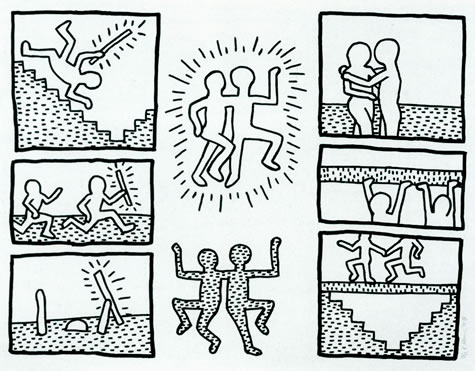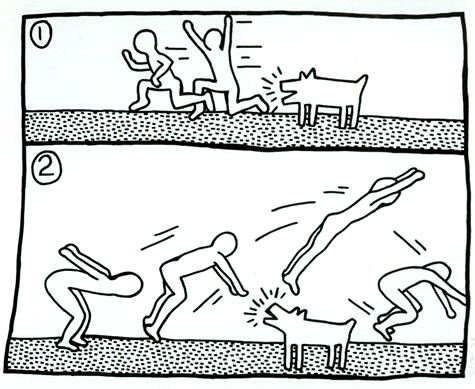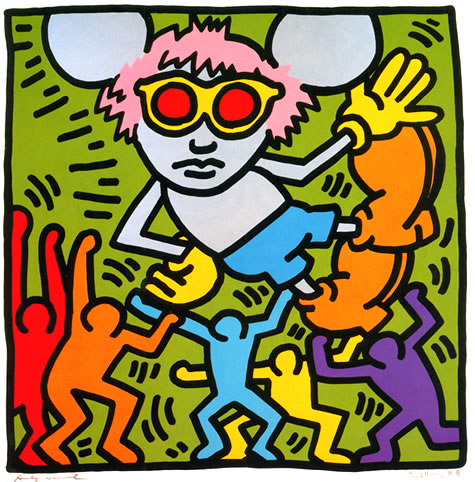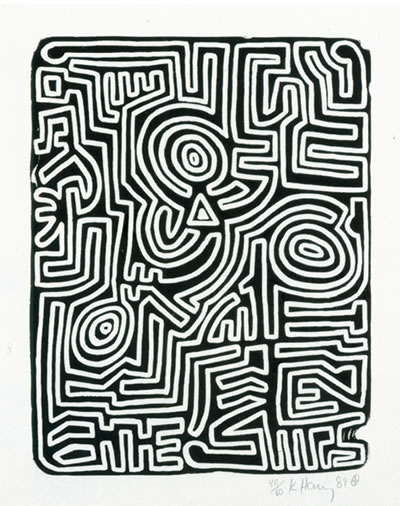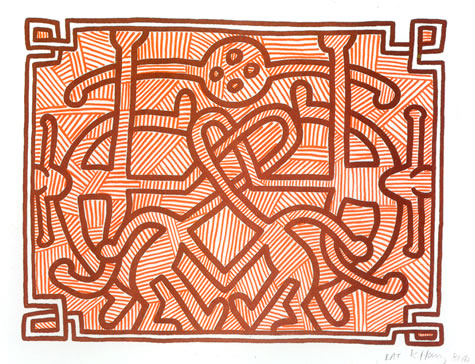The Blueprint Drawings (11) is an evocative piece from Keith Haring‘s poignant Blueprint Drawings series, a collection that saw its genesis in the dire midst of the AIDS epidemic in New York City. Created in 1990, the silkscreen piece of 42 1/2 x 54 inches stands as a testament to Haring’s genius in weaving socio-political narratives using his distinct visual language, amidst personal and collective suffering.
This artwork is arranged in three columns, housing eight intricate images. A recurring theme is the faceless figures—symbols of anonymity, perhaps evoking the societal taboo of anonymous sexual encounters. Their interactions, primarily affectionate, resonate with human connections, love, and adversity.
On the left column, the top frame captures a figure’s descent down a short line-dotted staircase, a glowing rod in hand. This staircase intriguingly continues its climb after the bottom, suggestive of ongoing struggles and ascensions. Subsequent frames depict dynamic chases, with the glowing rod, a frequent motif in the series, indicating power and the possibility to harm. At the base of the column, a poignant scene of the rod-bearing figure sinking into the ground, overwhelmed, possibly by the burdens of the disease.
Contrastingly, the right column is awash with images of love and partnership. Two figures stand on the symbolic dotted ground, representing the omnipresent AIDS virus, sharing an intimate embrace. These figures collaborate in carrying a beam, running hand in hand upon it, across chasm that intriguingly mirrors the initial staircase’s design.
The central column celebrates unity, with figures radiating joy, intertwined, symbolizing a shared journey. However, as the frames progress, the figures’ exuberance remains undiminished, even as they bear the short dotted lines, denoting the virus’s presence.
In Blueprint Drawings (11), Haring adeptly portrays love, companionship, and resilience amidst adversity, linking his personal anguish and the broader community’s struggles during the AIDS crisis.

